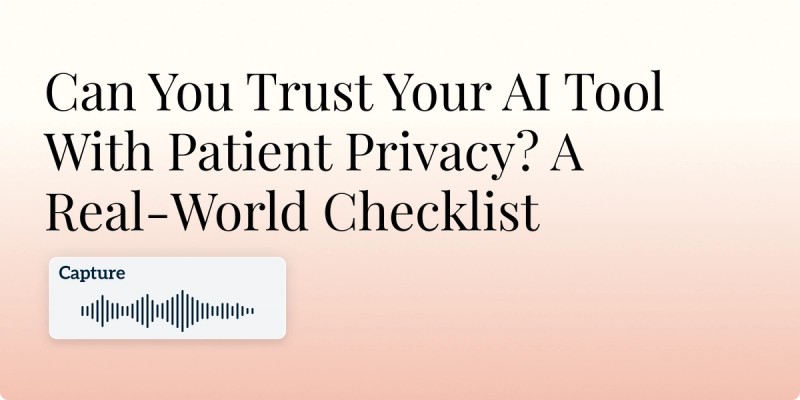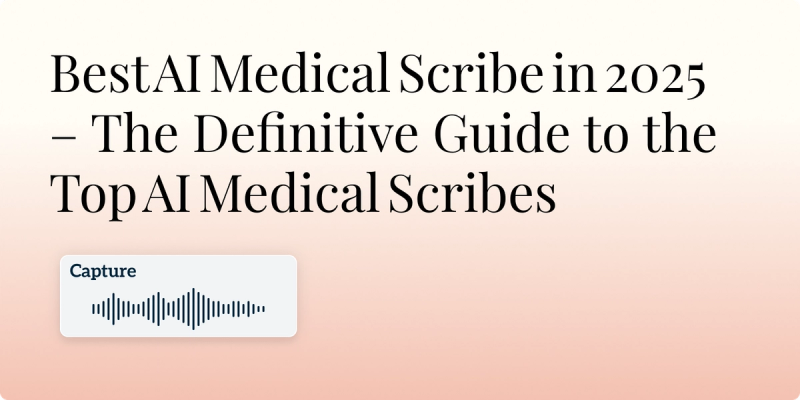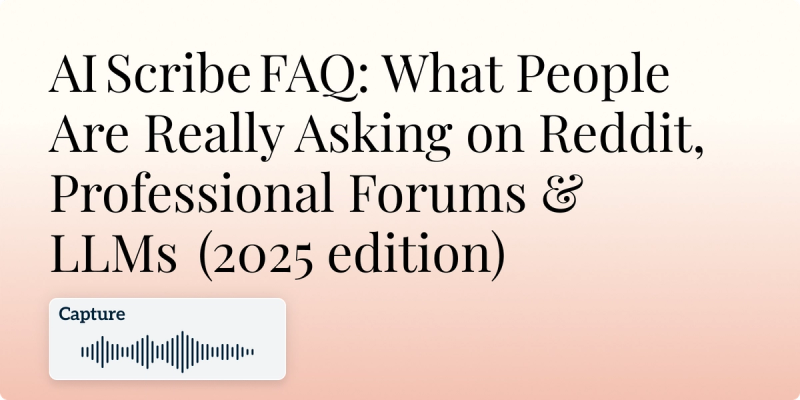
The Future of Medical Transcription

Medical transcription has come a long way, evolving from tape recorders and manual note‑taking into something straight out of a sci‑fi movie—thanks to Artificial Intelligence (AI). Today, AI‑driven medical scribes are transforming healthcare documentation, offering accuracy, speed, and convenience like never before. Let's dive into why AI scribes are not just a passing trend but the future of medical transcription.
1. Why Traditional Medical Transcription Needs an Upgrade
Traditional medical transcription is labor‑intensive, error‑prone, and costly. Common issues include:
- High operational costs
- Delayed documentation
- Human error in transcription
- Privacy and compliance risks
AI‑powered transcription addresses these pain points head‑on, making it a practical choice for clinics and healthcare teams.
2. How AI Scribes Are Revolutionizing Medical Documentation
AI scribes leverage natural language processing (NLP), machine learning, and speech recognition to provide real‑time transcription. Benefits include:
Enhanced Accuracy
AI algorithms continually learn and improve, minimizing transcription errors significantly.
Cost Efficiency
Eliminating manual transcription reduces staffing costs and improves operational efficiency.
Instant Documentation
Immediate transcription means doctors and therapists can review notes right after a session, enhancing patient care.
3. Key Technologies Behind AI Medical Scribes
AI scribes aren't magic; they're science! The key technologies include:
- Speech Recognition: Converts spoken words into digital text.
- Natural Language Processing (NLP): Analyzes and understands human language.
- Machine Learning (ML): Enables continuous improvement through data-driven learning.

4. AI Scribes in Action: Real-world Applications
Clinics, healthcare providers, and mental health therapists are already harnessing the power of AI scribes:
- General Clinics: Reduced paperwork, increased patient interaction.
- Specialized Practices (e.g., mental health): Enhanced accuracy in therapy session documentation, improved compliance.
5. Data Table: AI Scribe vs Traditional Transcription
Feature | AI Scribe | Traditional Transcription |
|---|---|---|
Cost Efficiency | ✅ High | ❌ Low |
Speed & Real-time Output | ✅ Instant | ❌ Delayed |
Error Rate | ✅ Low (~5%) | ❌ High (~20%) |
Privacy & Compliance Risks | ✅ Minimal | ❌ High |
6. Predictions: What’s Next for AI Medical Transcription?
AI is continuously evolving. Here's what to expect in the next few years:
- Integration with Electronic Health Records (EHRs): Seamless, automated entry into patient records.
- Voice-enabled commands: Direct AI interaction for editing and summarizing patient notes.
- Enhanced Predictive Analytics: Using transcription data to predict patient outcomes and enhance clinical decisions.
Conclusion: Embracing the Future
The shift towards AI medical scribes is clear and inevitable. Healthcare providers, clinics, and therapists who adapt early will lead the charge in improving patient care and operational efficiency. So why not let AI handle the paperwork while you focus on what truly matters—your patients?
Frequently Asked Questions
ABOUT THE AUTHOR
Dr. Danni Steimberg
Licensed Medical Doctor
Reduce burnout,
improve patient care.
Join thousands of clinicians already using AI to become more efficient.

Can You Trust Your AI Tool With Patient Privacy? A Real-World Checklist
Use our real-world HIPPA checklist to vet your AI tool. Ensure your patient data is secure and your practice stays compliant.

Best AI Medical Scribe 2025 – Comparison, Pricing & More
Discover the best AI medical scribe tools of 2025. Compare top AI medical scribes by speed, cost, HIPAA compliance, and real physician reviews.

AI Scribe FAQ: What People Are Really Asking on Reddit, Professional Forums & LLMs (2025 Edition)
Discover the real‑world questions clinicians ask about AI medical scribes - legality, HIPAA, accuracy, consent, specialty fit & more - answered by experts.

